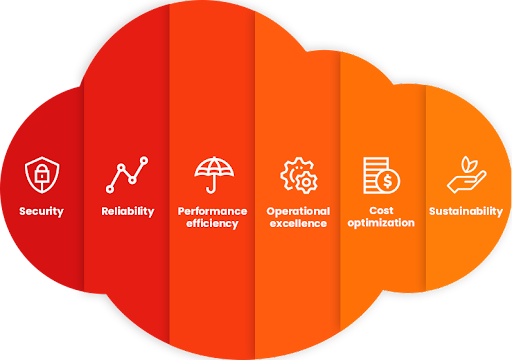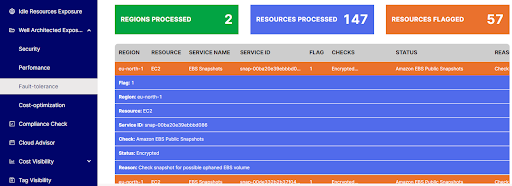
AWS Well-Architected Framework: Reliability
Welcome back to the AWS Well-Architected Series. In our previous post, we dealt extensively on the need to build a cost optimised cloud architecture in order to ensure that you don’t run into cloud wastes and that cloud resources are well utilised.
In this blog post, we will be looking at another framework pillar- the reliability pillar which focuses on workloads performing their intended functions and how they recover quickly from failure to meet demands.
The Reliability Pillar
The Reliability pillar encompasses the ability of a workload to perform its intended function correctly and consistently when it’s expected to. This includes the ability to operate and test the workload through its total lifecycle. It focuses on designing systems that anticipate and recover from failure, ensuring that you have a strategy for operations and availability and that you can monitor and respond to system changes. Still using the analogy of building a house, the reliability pillar makes sure that your architecture is resilient.
Principles Of The Reliability Pillar
- High Availability: This means that the cloud architecture is able to detect and respond to hardware and software failures and automatically recover from them restoring the architecture to a known state. This process usually involves restoring from a backup or using redundancy and failover techniques to ensure that operations resume as quickly as possible.
- Test Disaster Recovery Procedures: Testing cloud recovery procedures allows businesses to set up failover capabilities in order to ensure that operations can continue even if one of the data centres is unavailable.
- Scale Horizontally To Increase Aggregate Workload Availability: Scaling horizontally to increase aggregate workload availability means adding more servers or nodes to the cloud architecture to handle the increased workload. This allows the cloud to manage more workloads simultaneously and increase performance.
- Stop Guessing Capacity: Stop guessing capacity on the cloud means that organisations should stop trying to guess how much capacity they need on the cloud and instead focus on using the cloud to its full potential. This means taking advantage of the scalability and flexibility that cloud computing offers to ensure that resources are used efficiently and that capacity is allocated according to actual usage.
- Manage Change In Automation: Manage change in automation on the cloud architecture refers to the process of automating the management of cloud-based technology solutions. Managing automation of change management helps organisations reduce manual effort and cost associated with managing cloud solutions, while also helping to ensure that solutions remain secure and reliable.
Architecture Reliability Best Practices
- Foundational Requirements: Before building on the cloud, foundational requirements that influence reliability should be in place. For example, you must have sufficient network bandwidth for your data centre. These requirements are sometimes neglected (because they are beyond a single project’s scope). With AWS, however, most of the foundational requirements are already incorporated or can be addressed as needed. The cloud is designed to be nearly limitless, so it’s the responsibility of AWS to satisfy the requirement for sufficient networking and compute capacity, leaving you free to change resource size and allocations on demand.
- Design Decisions: A reliable cloud architecture starts with upfront design decisions for both software and infrastructure. Your cloud architecture choices will impact your workload behaviour across all six AWS Well-Architected pillars. For reliability, there are specific patterns you must follow, such as loosely coupled dependencies, graceful degradation, and limiting retries.
- Anticipate Changes To Your Workload: Changes to your workload or its environment must be anticipated and accommodated to achieve reliable operation of the cloud architecture. Changes include those imposed on your cloud architecture, like a spike in demand, as well as those from within such as feature deployments and security patches.
- Low-level Hardware Component Failures: Low-level hardware component failures are something to be dealt with every day in an on-premises data centre. In the cloud, however, these are often abstracted away. Regardless of your cloud provider, there is the potential for failures to impact your workload. You must therefore take steps to implement resiliency in your cloud architecture such as fault isolation, automated failover to healthy resources, and a disaster recovery strategy.
How To Build A Reliable Cloud Architecture
- Use Cloud-Native Technologies: When building a cloud architecture, it’s important to use cloud-native tools and technologies that are specifically designed for the cloud. These tools are optimized for scalability and can help you build a reliable cloud architecture that can easily scale with your business.
- Leverage Automation: Automation is a key component of building a reliable cloud architecture. Automation helps you manage your cloud resources more efficiently and reduces the risk of manual errors. Automation also helps you quickly scale your architecture to meet the needs of your business.
- Implement Monitoring and Alerts: Monitoring and alerts are essential for keeping track of your cloud resources and identifying potential problems before they become an issue. You should set up both system-level and application-level monitoring to ensure that your cloud architecture is running optimally and that any potential issues are identified quickly.
- Utilize Load Balancing: Load balancing is an important part of ensuring that your cloud architecture is reliable. Load balancing helps you distribute requests across multiple cloud resources so that if one fails, the others can take up the slack.
How Wendu Builds Reliable Cloud Architecture
Companies build a reliable cloud architecture to provide secure and reliable access to their data and applications. This helps ensure that their data is safe, secure, and easily accessible when needed. Additionally, reliable cloud architecture allows companies to scale their applications to meet the demands of their customers, while also providing a more cost-effective platform than traditional on-premises solutions.
Wendu helps companies of all sizes run a reliable cloud architecture by automating the AWS Well-Architected Assessment - fault tolerance best practices. Wendu gives you full visibility and monitoring of your cloud architecture in every region you have assets in, to identify areas for significant improvements to the reliability of your AWS architecture.


Learn more about Wendu here, and you can also request a demo to see Wendu in action.